7 Ways Every Gardener Can Combat Climate Change
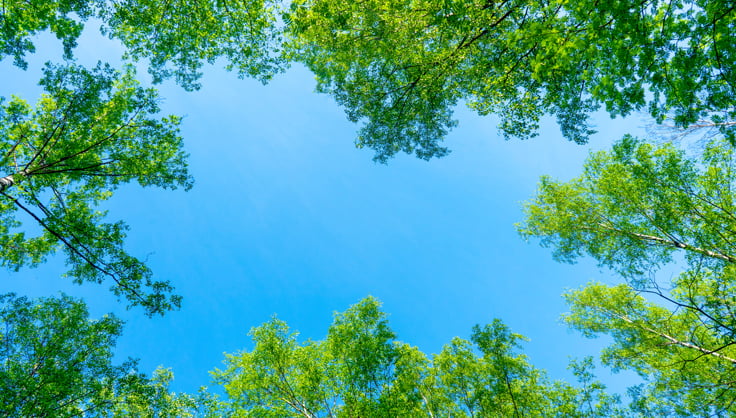
Yep, you read that right! Sure, climate change sounds big and scary, but as a gardener, you can take a few simple steps—some of which, you’re likely already doing—to help the planet. Dig in with these tips from our in-house pros, below.
1. Grow Plants, Especially Natives
The most basic way to prevent greenhouse gases like carbon dioxide from entering the atmosphere (and warming up the climate) is by growing plants. As gardeners, it’s what we do! (And you can take a big sigh of relief here, for starters.) While cars, planes and factories burn fossil fuels for energy, releasing carbon dioxide, plants actually absorb carbon dioxide in their photosynthesis process, turning it into sugars and locking it out of the atmosphere for years. They store it in their woody stems and roots and eventually, it will turn to decayed plant matter in the soil.

Lean in to Long-Lived: Trees are the most efficient of plants when it comes to draining carbon dioxide from the air, with long-lived shrubs coming in second in their ability to sequester carbon. Long-lived woody perennials, like peonies, and ornamental grasses like pheasant’s tail (with extensive root systems) are also good options. But you can think of every plant— no matter the size — as a tiny carbon sink.
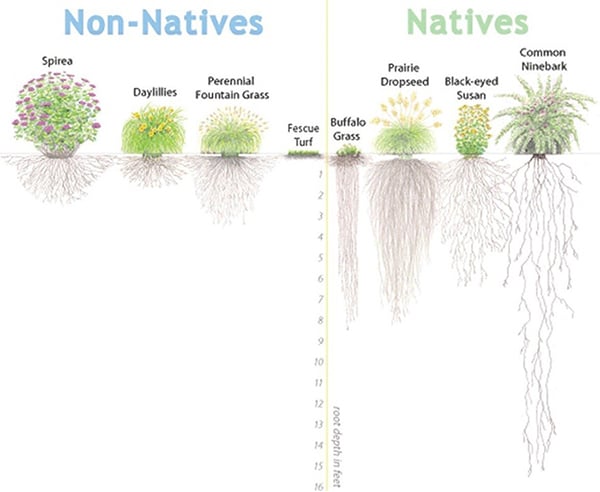
Go Native: All that said, you should aim to focus your efforts on growing native plants, advises Cynthia Faith, a certified horticulturist at our Hadley, MA garden center. “Invasive plants can dominate really fast and are very hard to control, leading us to use chemical means or pull them up and expose the soil, releasing carbon,” Faith says. You won’t have this problem with native plants though, she notes, plus native plants increase biodiversity. More good news? Your local garden center sells only natives (state regulations prevent local selling of invasives) or you can search for plants native to your area on the Audubon’s Native Plant Database or the Lady Bird Johnson Wildflower Center Native Plant Database.
2. Make Your Own Compost
Besides growing plants to draw carbon out of the atmosphere, you can stop carbon dioxide from getting there in the first place by making something your plants will love: (you guessed it) compost. Otherwise known as decomposing organic matter, compost can be added to your soil to help your plants grow.

Skip the Landfill: Compost keeps your kitchen and garden waste out of landfills which produce not only carbon dioxide but also methane — a greenhouse gas with a global warming potential 25 times that of carbon dioxide. Plus, compost increases the biological activity, fertility and water-holding capacity of your garden. (Are you convinced yet?)
Small Effort, Big Benefits: “People sometimes get worried that if they compost, it will stink!” Faith says. “But if you get the balance right, it shouldn’t have any odor and you shouldn’t attract any animals. It’s just initially starting to compost at home that takes a little bit of time, but it’s amazing how quickly food scraps get broken down and you can use them in your garden.” Need some help getting started? Begin with our comprehensive guide: Composting 101: All About Composting.
3. Mulch, Please!
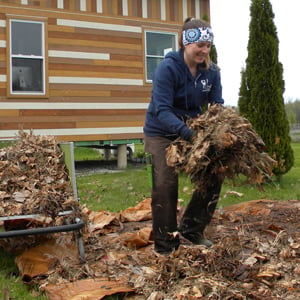
Dig No-Dig! You may have heard that tilling — a.k.a. digging, stirring or over-turning the soil, either by hand or with a gas or electric-powered rototiller — is all just part of the process for preparing a new garden bed. But, wherever you heard it, no matter if your favorite grandma told you about it: Forget. It. Now! The soil you grow your plants in holds 83 percent of your garden’s carbon, sequestered in plant roots, fungi, bacteria, living and dead animals and humus (decomposed plant matter). One of the best ways to protect your garden soil’s carbon-sink potential is to disturb it as little as possible. Instead, you should mulch.

Layer It On: “When you layer on organic matter [the definition of mulching], you’re sequestering more carbon. You’re protecting soil from wind erosion, runoff and UV rays that destroy soil life. And you also help water stay put,” says Kim Dostaler, a no-till champion certified in permaculture design and graphic designer at our Burlington campus. “With no-till/no-dig, your plants will be healthier, there will be more soil life, and you’ll need less fertilizers and weed killers. It’s a little more work to set up a no-dig garden at first, but eventually it’s going to be better for the environment.” Dostaler’s favorite method of mulching is “sheet mulching,” also called “lasagna mulching.” To read her complete how-to, plus to watch a time-lapse video of the process into action, go to: Sheet Mulching—the What, the Why and the How.
4. Choose Organic Fertilizers
Skip the Chemicals. If at all possible, skip synthetic fertilizers (made by chemically processing raw materials) as greenhouse gases are released during their manufacture. Even worse, once they’re in the soil, synthetic fertilizers produce nitrous oxide—a greenhouse gas much more potent than carbon dioxide.

Instead, Go for Organic Fertilizers. These are made from naturally occurring mineral deposits and organic material, such as bone or plant meal or composted manure. Questions? Start here: Fertilizer basics.
Organic Feeds the Soil Too! “I’ve heard it said that giving synthetic fertilizers to your plants is like feeding your children just vitamins to survive,” Faith says. “You're getting them the good things they need … but not everything they need to grow and flourish.” Giving your plants organic fertilizers, on the other hand, is like feeding your children a well-rounded diet of whole foods. Bonus: since they're naturally derived, organic fertilizers add organic material to your soil, improving it over time.
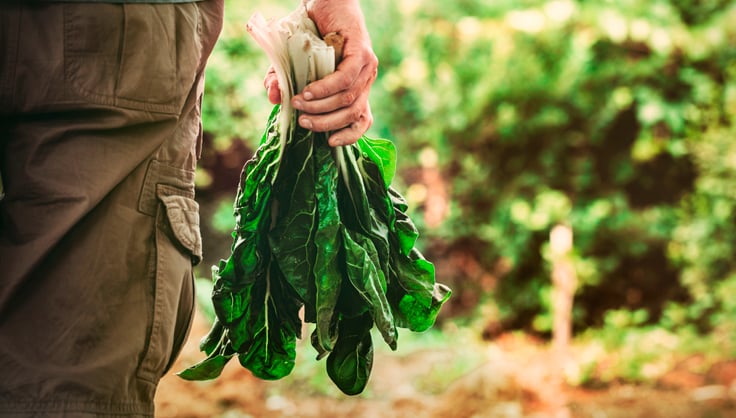
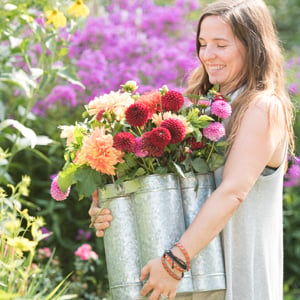
5. Go Garden to Table — and Vase
Omit the Miles. It’s estimated that food production, processing and transportation are responsible for one-quarter of the world’s greenhouse gas emissions. The food we grow at home, however, is much more sustainable since it simply travels from garden to table (if you can make it that far with those juicy tomatoes!).
Perennials: Consider peppering your garden with perennial vegetables and herbs (which come back year-after-year, as opposed to annuals). Not only will these store more carbon, but no replanting is required. “Most people think of your perennials as fruits, nuts and berries, and there are a few perennial vegetables most people know about like asparagus and artichokes,” says Dostaler. “But, there are a lot more perennial vegetables and herbs out there.” More perennial vegetables include: sea kale, some varieties of spinach and broccoli, radicchio, rhubarb and sweet potato, to name a few. For herbs: chives, thyme, lavender, oregano, sage, and lemon verbena are on the list. (Simply read seed and plant labels to check what is considered a perennial in your zone.)
Grow Your Bouquet. And while you’re growing your own vegetables, why not grow your own flowers? Out-of-season cut flowers are among the most carbon-heavy items you can buy, pound for pound. Instead of buying cut flowers (we know, we know: the Trader Joe’s bouquet is pretty and cheap) growing your own—especially native, perennial ones to benefit local pollinators—reduces fossil fuel emissions. You can even get creative with what you consider a bouquet. “I make them a lot of times with other things growing in my garden,” Dostaler says. “Chives are really pretty, so are purple mustard greens: think of alternative materials!”
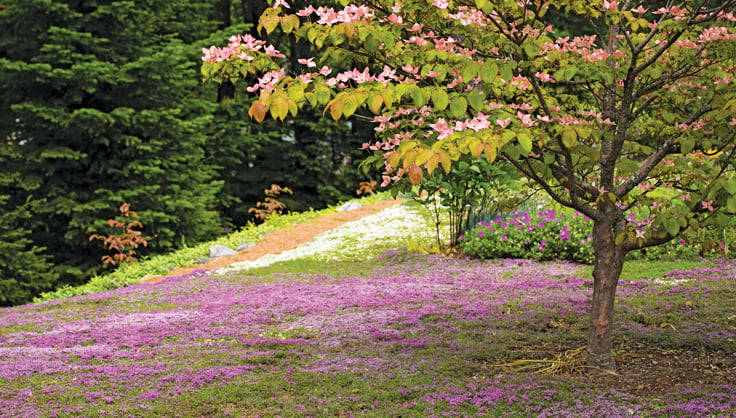
6. Power Down or “Un-lawn”
Step off the Gas. A push or ride-on lawn mower is certainly convenient—especially for large swaths of grass—but it burns fossil fuels every time you rev that engine plus it creates noise polllution. A battery-powered mower is a much better (and quieter!) alternative. Push-reel lawn mowers (the kind with no gas) and hand-tools not only keep you from using power, but help you stay physically fit. We say: consider using these if at all possible. However, we also completely understand if, especially when it comes to cutting the grass, the task seems like way too much work. In which case…
Reimagine Your Lawn. Reduce your lawn to mow less! This is also known as “un-lawning” your lawn. Instead of a traditional patch of green grass, mix meadow grasses with wildflowers through your yard to help pollinators and support biodiversity. “There are also new, low-mow grasses you can buy,” Faith says, “Or you can plant white clover—a nitrogen fixer which supports pollinators with its flowers and spreads nicely with very little fertilizer input—as an alternative to a lawn. Also, creeping thyme is another nice alternative, which smells good and has pretty flowers.”

7. Plant Cover Crops
“One thing gaining in popularity with people who garden is the importance of planting cover crops,” says Deborah Miuccio, who manages both our Burlington test gardens and our national garden tester program. “Farmers do it on a large scale, but even backyard and front yard gardeners can reap the benefits of growing cover crops, even in small spaces—and make a difference.”
Plant Perpetually. If you’re not familiar with the term, cover crops are plants that are not meant to be harvested, yet should be planted year round. They stabilize soil (improving soil structures to help avoid erosion), add nutrients to it (they can even improve the soil in places where it has been completely depleted) and they sequester carbon from the air. “Basically, the idea is to never leave soil naked or bare at any time of the year,” Miuccio says. “So, any time you have a spot in the garden you're not planting in—if you're in-between winter crops, but it's too soon for your summer crops—that’s a time you can grow cover crops.”
Seed and Feed. The best cover crops for home gardeners include: field peas, oats, annual rye and vetch. And you can always check with your local agricultural extension agent for a list of the best cover crops for your area. “They’re easy to grow along with whatever else you’re planting,” Miuccio says, “so you can even interplant. Just cut down the cover crops once they grow to the point before they start to flower, leaving their roots in the soil to feed all that beneficial life underneath.”
The bottom line: Don’t despair about global warming! As gardeners, let’s get outside and do what we do best to make a real impact: garden.
Print this Article:
Get the Dirt
Stay up to date on new articles and advice. Please fill out the information below.

